I hauled my heavy luggage out of Ourcq station, and up the Metro stairs. It was starting to rain. Fat drops pelting against my glasses with increasing intensity. I was bone-tired and unprepared. The 18-hour flight made my vision blurry, and all the sugar I've ingested made me fidgety. I looked towards Borgy already struggling with multiple bags. A soft-eyed gentleman making his way up the Metro offered me a hand with carrying my luggage, but I politely refused, not wanting to cause any trouble for anyone. I dashed across the pavement dragging my damp bags. The brown awning of
Le Concorde gave us temporary shelter. We looked out at the empty avenue. Hardly any cars passed the street. Only a few people were around, a handful in parkas and coats bent over and, like us, running to the direction of restaurants' awnings, trying to escape the rain. Belatedly, I realized that this dreary day is the first real look I'm getting at Paris.
Against the Parisian Skies ●●
The neighborhood of apartments and small establishments were all pictures of simple and modern practicality, and not very distinctive of what I imagined Europe. But the neighborhood we were settled in on those first few days was quiet and uncrowded. The sidewalks were spacious and provided and easy walk from the station. This also gave us the chance for a relaxed stroll along the quay of
Canal de l'Ourcq. Eventually the quaysides, small parks, and modern buildings gave way to busy boulevards and fancier buildings.
 |
| Canal de l'Ourcq quayside |
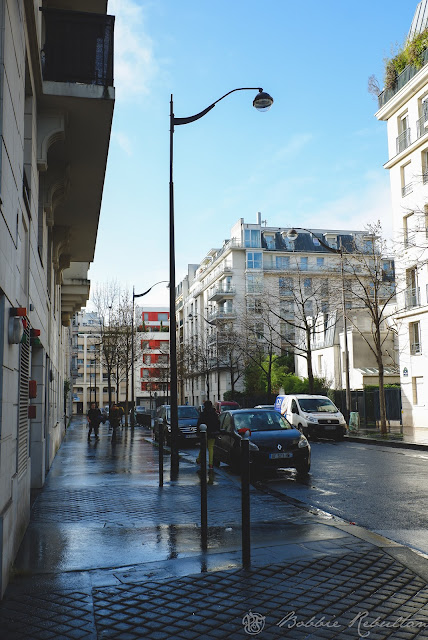 |
| Rue Joseph Kosma |
Paris is an artwork. Rain on our first few days blanketed the city in an old-world shimmer. The bare trees in winter rendered a Tim Burton movie vibe. The murals and artworks on walls added a stark contrast, and gave the city a sense of edginess. Most of the buildings are already modern, but small accents passed down from a history of fancy architecture added a flair to modern buildings: elongated windows, decorative wrought-iron Juliet balconies, brick buildings with high arches, intricate stonework surrounding the windows, and patterned carved cornices running along the top of the building.
 |
| Murals along Canal de l'Ourcq |
 |
| Boulevard du Palais |
One of my personal favorites to ogle at is the cream-colored apartment buildings in Napoleon III style of architecture, or what they usually call the Haussman-style buildings. The decorative uniformity of these apartments and buildings provide a vintage aesthetic, and the facade displays a certain degree of affluence whether they are viewed from the boulevards, or blended against the Parisian skies. Harmony and practicality are what the Haussman-style aim. These buildings on one street block are often designed the same to maintain a sense of melodic symmetry with the neighborhood facade, all while serving usability: the ground levels are shops, while the top levels are the owner's apartments or family residences. Pleasing to the eyes while being practical.
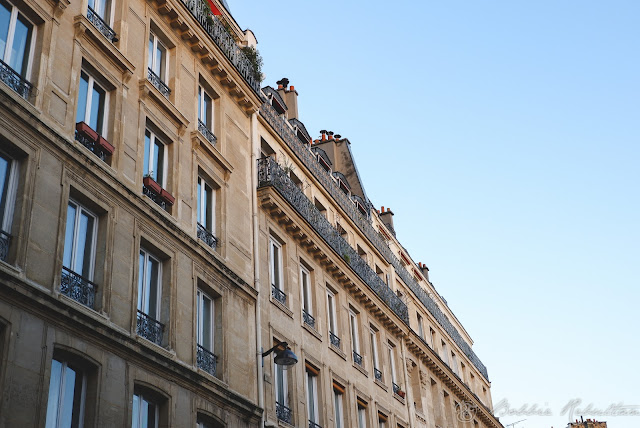 |
| Along the streets of Montmartre |
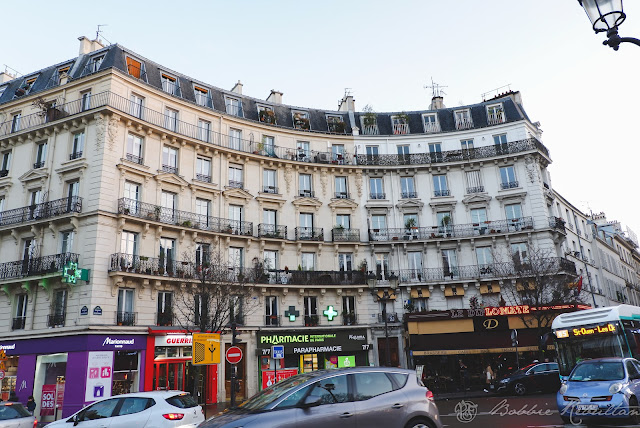 |
| Haussman-style establishments |
One example of this style is the last AirBnb apartment we've stayed at along the bustling
Rue du Faubourg Saint-Martin, a street that offers a 7-minute walk to
Gare de L'Est. The street is lined with mostly identical styled buildings, whose ground levels are occupied by cafes, supermarkets, boulangeries, and
salon de coiffures. Our building in particular has a red door that opens up to a small courtyard that has access to the back doors of wines stores, restaurants, and patisseries of the area. The apartments are located at the upper levels of the buildings.
 |
| The gate opens up to a courtyard |
 |
| Place des Victories |
 |
| A rainy dawn at Gare de l'Est |
It goes without saying, this style of residential buildings is part of a larger
picture artwork that is Paris. The more unique and grander forms of architecture are found in Paris' monuments, landmarks, and grand churches. On those first few hours in the city, we visited one of these churches that contribute to the unique picture of Paris against the skies:
Basilique du Sacré-Cœur at Montmartre.
The rain did not dampen the influx of tourists gathering around the church. Once we reached the top, I staggered as the basilica towered over me up close. This was the first European church I have seen, and is more unique in architecture than the other churches we've visited in Europe.
 |
| Basilique du Sacré-Cœur |
While most churches we've seen are Gothic and Baroque in style, this basilica boasts the Romano-Byzantine architecture with its grand domes and coffering of gold on its ceilings. Nevertheless, this gave us a quick peek on what to expect with churches for the rest of our trip: high arches, hypnotizing stained glass windows, and life-like sculptures with thousands of details my hungry eyes devoured. From the outside, the immensity captured my attention, but inside, the apse mosaic immediately drew my eyes. Its interior is nothing short of grand, mirroring the outside's vastness.
 |
| Sacré-Cœur's Apse |
Our time inside the church gave a few minutes for the clouds to clear. And as we got out of the basilica, we were greeted with a breathtaking view of Paris. The Sacré-Cœur stands at
butte Montmartre, the highest point in Paris. The parvis of the basilica served as a great vantage point to see the horizon of the city, but given the number of tourists in this area, it also became susceptible to pickpockets and thugs. I've read that most monuments can be viewed from there particularly from the dome (which, I'm only finding out now as I write this, is accessible to tourists). Unfortunately, there was still a thin layer of fog (smog?) enveloping the city, so the vision we saw is a bit hazy, but nothing short of amazing.
 |
| The late afternoon sun provided a halo on the city |
Another church we were able to visit was the famed
Notre-Dame de Paris. In our stay in France, we were able to visit two
Notre-Dames--one in Paris and one in Strasbourg. Notre-Dame de Paris is one among the
many Gothic cathedrals in Paris, and only one of the few we've visited in the city.
 |
| Notre-Dame de Paris |
In my own world, its fame is mainly from watching Disney movies where as a kid where my heart broke for Quasimodo. But this cathedral is more than just a Disney movie. The cathedral has a rich history, and has one of the most elaborate decors I have ever seen. The facade of the church has three portals. Atop each is a tympanum with a set of archivolts bearingnumerous intricate moldings depicting religious imagery. I was itching to inspect each facet of the tympanum closer, but due to my height, I had to take a photo of it and then zoom in to see the details. Haha.
 |
| Typanum of the Portal of the Virgin: depicting Mary's coronation |
 |
| Above the church portals is the gallery of the kings |
Once inside, you will be greeted with a dim bluish glow from the stained-glass windows of the church. I believe that each stained glass window possesses a unique design, each looking kaleidoscopic and hypnotizing. We walked along the outer aisles where sculptures, Catholic paintings, and small models depicting the cathedral's history provided a small museum of sorts for the visitors. I think each panel of the walls along the aisle has unique stained-glass windows. The inside was spacious and serene. The occasional accidental flashes of a camera temporarily lights up the nave of the cathedral, but otherwise quiet. Towering columns supporting the structure of the church are lined up along the nave and aisles. Ribbed vaults fan out from the main portal to the sanctuary, providing the structure its medieval form.
 |
| View from the aisle |
 |
| Carved scenes from Christ's childhood |
 |
The Gothic architecture shines through the stained-glass windows
and ribbed vaults |
 |
| The Visitation painting by Jean Jouvenet inside Notre-Dame de Paris |
 |
| The rose window of Notre-Dame de Paris |
I didn't fully realize how large the cathedral was when we approached it from Boulevard du Palais. But when we were done with visiting the church, we took along
Rue du Cloître-Notre-Dame to look for cheap souvenirs. Once we got to this street, we were greeted with a surprising view of the cathedral's spire and flying buttresses. Even from this side, great detail and care has been implemented to protect the cathedral's form all while maintaining its decorative form, a true work of French Gothic architecture.
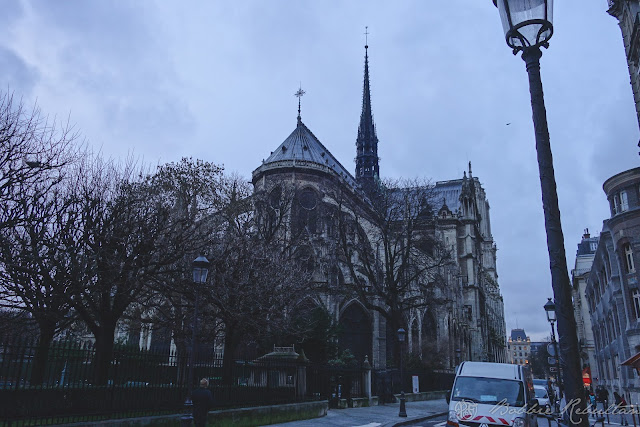 |
| Notre-Dame de Paris spire viewed from the north of the cathedral |
 |
| Notre-Dame de Paris' flying buttresses |
Of course, this trip wouldn't be complete if we didn't indulge in a few Parisian clichés.
The Eiffel Tower is the landmark that immediately conjures up images and visions of summers in Paris. A fodder for the romantic soul. Cafés and fancy women in berets and coats. This is the landmark I have seen on picture books as a kid, on paintings and drawings, on commercials of perfumes and bags. The story of this tower serves as a reminder for me about how unpredictable the currents change--this strange landmark, who have been frequently protested after, and which was originally only a temporary installment, became the icon of the city. This is quintessential Paris.
We approached the tower from the
Palais de Chaillot, which gave us an amazing view of her. It was early and the ominous skies induced a few minutes of panic. But the Iron Lady stood there, proud and majestic, conquering the landscape of Paris, and defiant against the swell of darkening clouds, as if challenging the skies to test her beauty against the rain. A thicket of tawny bare trees from the neighboring gardens hemmed in on both sides of the wrought iron frame. Through it, a patch of green from
Champ de Mars framed the tower against the bleak background of a cold January in Paris.
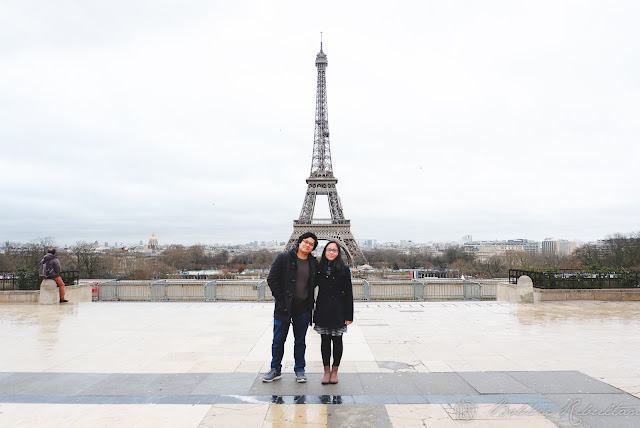 |
| View from the Palais de Chaillot's promenade |
 |
| La Dame de Fer (Iron Lady) |
After taking a few (
hundred) pictures on the platform, we crossed the base of the tower and marveled at the latticed metalwork from below. From the sweeping base, the tower is a behemoth. You'd think it was just a quick walk towards the other end, but it took a few minutes for us to reach Champ de Mars' side. We no longer climbed up the tower because we were pressed for time, but looking at it up close like that is enough to marvel at this enduring symbol of French architecture and creativity.

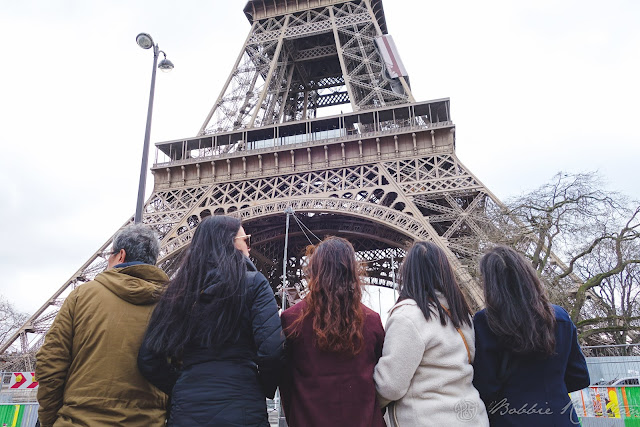
The French didn't always like the Eiffel tower. When Gustav Eiffel first built it for the Universal Exposition to demonstrate the ingenuity of French architecture and the French's industrial power, there have been protests left and right. For many Parisians then, the Eiffel Tower is an eye sore; something that goes against the extravagant elegance of the architecture of Paris. But due to its success on the World Exposition, Gustav Eiffel went to great lengths to prevent the tower's destruction by using the Iron Lady for scientific pursuits, particularly during the First World War. Due to the scientific use of the tower, and the number of tourists it draws in, the Eiffel Tower remained steadfast against the Parisian skies.
 |
| The Eiffel Tower viewed from the Jardins du Trocadero |
One of my regrets during my stay in Paris, is that I wasn't able to see the Eiffel Tower at night with its lights illuminated. Apparently, it is illegal to use/post pictures of the Eiffel Tower at night will all its lights up. I've read websites that says this restriction only applies to commercial and editorial uses, but some also says that taking a picture of it at night is illegal in the first place even for personal use. The illumination copyright is owned by
Société Nouvelle d’exploitation de la Tour Eiffel. Whether the copyright law is actually enforced on it or not remains an unclear subject.
Another testament to the French's love for art and history is the Louvre Palace. This humongous expanse of a museum houses more than 30,000 objects from pre-history up to the 21st century, and is considered the largest art museum in the world. The Louvre was once a fortress, turned into a palace for the kings of the 14th century and artists in the 17th century. And finally, an expansive public museum during the French Revolution.
 |
| A section of the Louvre Palace |
 |
| Pyramide du Louvre |
 |
| Inside the entrance of the Louvre |
The Louvre Pyramid serves as the main entrance to the museum. The structure provides an interesting overlay against the French Renaissance architecture of the palace's facade, as if you're viewing the palace through the multiple facets and cuts of a diamond.
Given the size of the museum, we
cannot and
did not tour the entirety of Louvre in one go. We were inside the museum for a few hours, and tried to check out a lot of pre-historic objects while figuring out a way to Mona Lisa.
 |
| Marble sculpture La Loire et le Loiret by Corneille VAN CLÈVE |
It became frustrating at one point because we felt like we were so close to where the Mona Lisa was, but the alarms blared and instructed tourists to proceed to the nearest exit. Of course, we followed the instruction. After getting herded towards different directions and completely getting lost inside the Louvre, the alarm stopped and we were okay to roam around again. I think this was the same time that heavy rains flooded part of the Louvre (see story
here). Although we couldn't verify this, and we never knew what really triggered the alarm. So, after getting winded from already roaming the museum for a few hours, we finally asked someone directions to get to Mona Lisa.
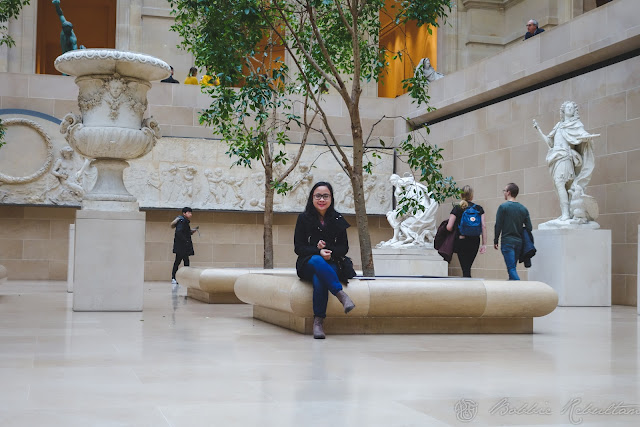 |
| Inside the Cour Puget (Puget Courtyard), Richelieu Wing |
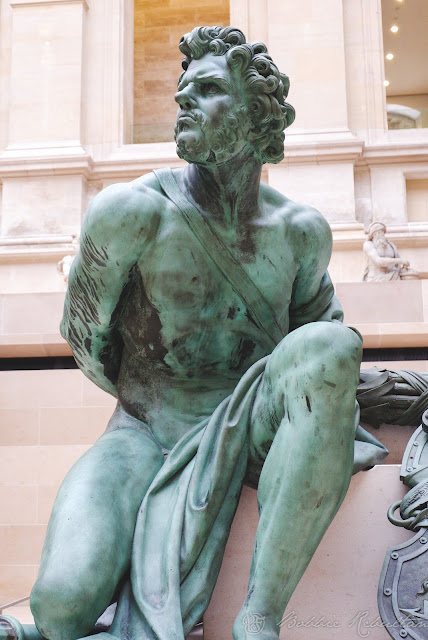 |
One of the "Four Captives" in gilt-bronze by Martin Desjardins
This represents the Defeated Nation of Holland |
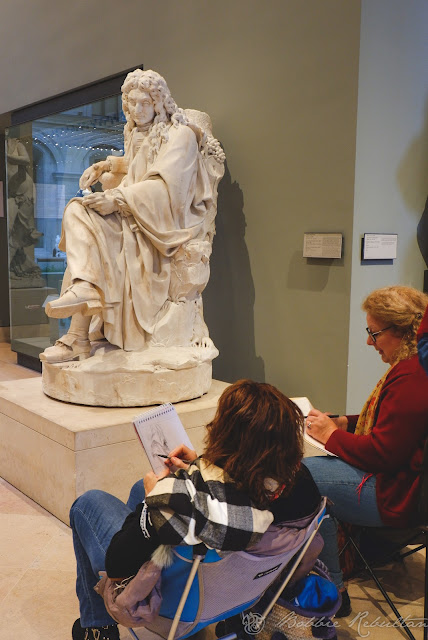 |
| Artists drawing at the Louvre |
We didn't see the entire Louvre Palace, but from the sections we've passed, one of my favorites is the Denon Wing which houses the most beautiful paintings I've laid eyes on. From Italian Renaissance to 19th century French paintings; from large pieces of work covering almost an entire wall, to ceiling frescoes spanning an entire hall, to smaller window-like creations like the Mona Lisa. This wing is a testament to the skills of European artists.
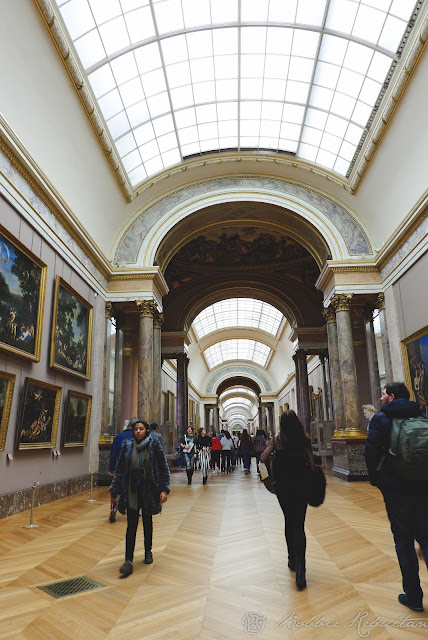 |
| The breathtaking hall on Denon Wing that houses paintings from the masters |
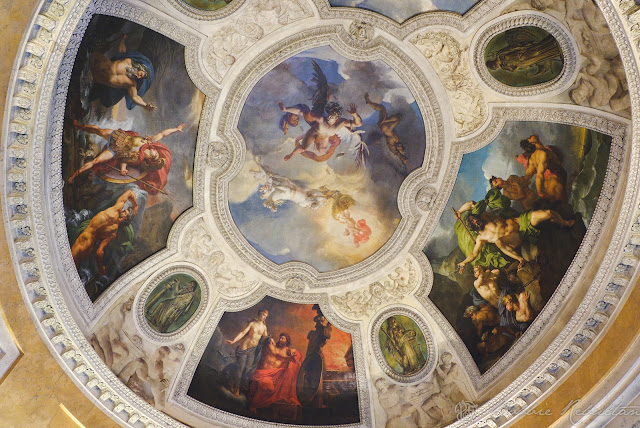 |
| The Fall of Icarus |
Another gallery that awed me to silence was the
Galerie d'Apollon. This room demonstrates the extravagant interior of the Second Empire style (same as the Napoleon III style) with its beautiful golden gallery. Its vaulted ceilings are embellished with paintings.
 |
| Galerie d'Apollon |
 |
| Looking up at Galerie d'Apollon: The Triumph of Neptune and Amphitrite by Charles Le Brun |
Beautiful stucco sculptures of angels, cherubs, winged creatures, and muses all contribute to the sheer divinity and luxury this hall exudes. True to the decorative arts principle it adheres to, there is absolutely no space undecorated on the ceilings and the walls. An overcast day bathed the room in a gloomy light. But I could imagine that on a beautiful dawn or a summer day, the natural light streaming from the large windows will soak the the room in a golden glow. As if those are not enough to convince its visitors of the room's grandeur, along the entire hall, gems and crown jewels encased in glasses dazzle on display.
 |
| Looking up at Gallerie d'Apollon: stunning paintings and stucco sculptures |
 |
| French Crown Jewels |
Finally, we noticed an unusual number of visitors drifting towards one particular room. The
Salle des Etats houses the Mona Lisa, Leonardo da Vinci's favorite work and considered one of the most valuable paintings in the world. Mona Lisa dominates this room. All cameras were pointed at her. Crowds flock her.
The painting is encased on a bullet-proof glass and cordoned off from its onlookers. I do not pretend to be an art buff, nor do I know a lot about this painting. I do realize, however the importance of this painting on the study of the arts--how da Vinci used one of the most complex painting techniques. But I cannot deny the fact that it is a little underwhelming. The size of it is no larger than your average casement window, and because of its tight security, you cannot see it up close (thank goodness for zoom lens!) But there she is, smiling mysteriously whichever angle you view her from.
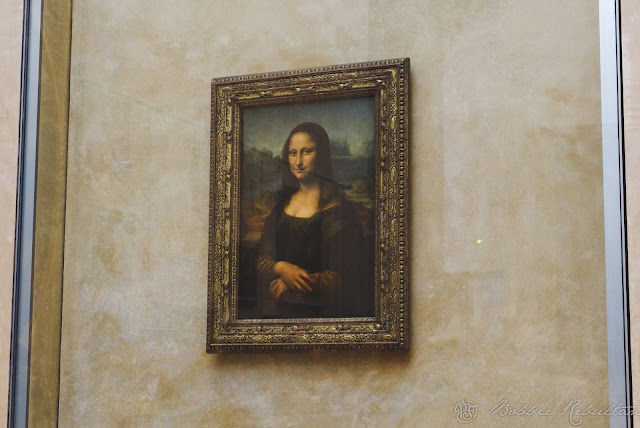 |
| La Joconde |
Despite being one of the smaller paintings,
La Joconde draws in the largest crowd. My size proved to be a great advantage as I jostled and squeezed between people to get nearer to it. While the Mona Lisa elicited a slightly baffled squint from me, one painting, in contrast, elicited an astonished gaze. The largest painting in the Louvre is also found in the same room, just across the Mona Lisa. The Wedding Feast at Cana by Paolo Veronese measures over 22 feet in height and more than 30 ft in width. My jaw fell when I laid my eyes on it. It quite literally almost covers an entire wall. The artwork is rich in detail from corner to corner. Given its size, the light pouring in from the Louvre's skylight reflected off the surface, which made it harder to inspect up close. I had to take a few steps back to see the painting in all its unbelievable glory.
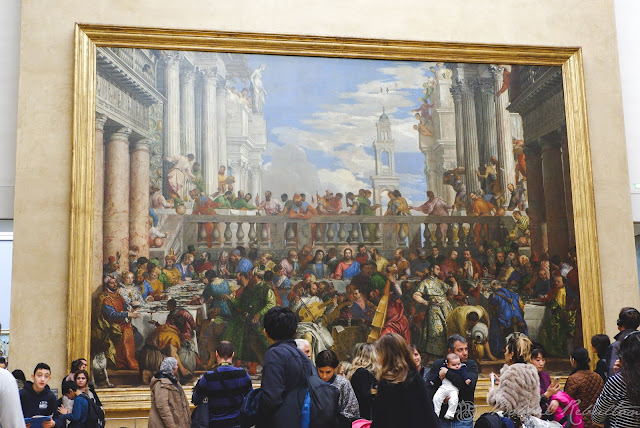 |
| The Wedding Feast at Cana by Paolo Veronese |
I remember walking along the halls of the museum, wondering not for the first time in my life why I did not hone any creativity or skill in the visual arts. How amazing would it feel to have hands of magic that can create life from pens, brushes, and chisels?
Our time in Paris was fleeting. The city served as a hub, and wasn't the main reason we were in Europe. We wandered from one place to the next, all while trying not to look like vulnerable tourists. We saw as much as we can with the time we had. We explored tourist-
y places and walked form one destination to the next, with the exception of when we were staying in the 18th
arrondissement, which proved quite an experience.
Alighting the
Barbès-Rochechouart, we were greeted with men stooped and hooded, gathered in groups, looking us up and down. I was immediately struck with fear. We would learn a few minutes later from our Uber drivers (including one fellow Filipino) that the place is known for prostitutes, pickpockets, and all sorts of petty crime. To be completely honest the entire time I was there, I was riddled with anxiety, not just from the stories, but from the furtive glances thrown our way. In this part of Paris, apparently, we stood out--short, olive/brown-skinned, and dressed in loud colors. Our large bags and luggage did nothing to blend us in. Fortunately, we only stayed one night in this area, and as we made our way around, we relied on Uber.
We were in a city so beautiful; a city whose culture and influences thrive in all parts of the world. Undoubtedly, Paris is not without flaws. Its reputation for luxury and romance is often comparable to its reputation as a crime-ridden city. With its dense population and the number of tourists flocking it every year, this city is bound to experience the effects of urbanization: environmental impact and inequality in society. Crooks roam even the major railway stations. Men with lightning hands and deceitful intentions. Men making it look like they were helping you with the ticket kiosks, but will end up asking you to pay more than the actual ticket price (yes, this happened). Streets and Metro stations of ill repute are dingy and on par with the streets of Quiapo, Taft, and Manila's LRT stations. Streets and spaces underneath overways are often occupied by panhandlers, and drunks unable to hold their liquor. Crime is an ever increasing worry for both locals and tourists. Scams and pickpockets are rampant most especially around the areas brimming with tourists. Men in groups insisting on tying this bracelet to your wrist, and then asking you for money afterwards. Women with scraggly hair, dark under eyes, and reeking of cigarette smoke brazenly grabbing your forearm while speaking rushed French and thrusting their crumpled "charity" leaflets.
(No photos because I was genuinely scared of taking out my camera any chance we were in a shabby neighborhood).
And yet, Paris has been heavily romanticized in works of art, and I can see why. This city is so striking and opulent, clearly made evident by the 1st
arrondissement. After a quick stop at Angelina's along
Rue du Rivoli (they have the purest and densest hot chocolate I've ever tried!), we walked leisurely along
Place Vendôme, and along
Rue de la Paix while discretely gawking at the luxury boutiques lining the streets. This was the quickest way towards
Galeries Lafayette, and so we welcomed the walk along one of Paris' richest neighborhoods. We passed along palatial hotels where golden interiors are viewable from the sidewalk. Their carpeted floors, and huge chandeliers are common in this part of Paris. Boulevards where ladies in high-heels and sunglasses, hands casually around their leather bag handles, and gentlemen in tailored suits look at us, some curiously and some haughtily.
 |
| A quick hot chocolate stop at Angelina's |
During this walk, we caught a glimpse of
Palais Garnier, one of the most famous opera houses in the world -- partly for its flamboyant interior and eclectic architecture, and partly for its fame as the setting of
The Phantom of the Opera (Le Fantôme de l'Opéra).
However harmoniously it blends against the monochromatic Huassman style buildings of the 9th
arrondissement, it distinctively attracts attention due to its facade. The green-tinted pinnacle of the theater's fly tower bearing the sculpture of Apollo holding a lyre can be seen from the streets. The gilded bronze sculptures of Poetry and Harmony on each side glinted off the sunlight, and seeming to ride off the golden waves that make up the cornice of the building. I can only imagine how grand its interior is.
 |
| Opéra Garnier or The Paris Opera |
 |
| Opéra Garnier |
This city never fails to outdo itself in terms of luxury and aesthetics. The upmarket department store,
Galeries Lafayette Haussman, houses an overwhelming number of designer brands. It was a delightful time for us to visit because it was
Les Soldes, the six-week winter sale in Paris. We made our way around the boutiques, dizzy with the different colored tags marking the varying price reductions. Even someone like me who does not splurge on shopping could not resist buying a few items on sale.
 |
| Galeries Lafayette Haussman |
As if I wasn't astonished enough with the number of bags I
wish I could buy, we finally reached the central court; I looked up and my jaw dropped. The levels of this upmarket department store surround the ground central court on wrought-iron balconies decked in ornate curves and colors. Fixtures of lights provided a muted regal glow, as if inside a palace's foyer. And finally, at the center is the magnificent and lavishly decorated stained-glass dome serving as the store's skylight. The steel frame grills supporting it are carved in floral motifs and run from the edge of the dome to its center.
 |
| Balconies of the Galeries Lafayette |
 |
| Galeries Lafayette's cupola |
A day before we left for Manila, the clouds cleared and we finally got to see Paris with color. Admittedly, this day was mostly spent eating at buffets, and shopping for souvenirs and chocolates. We made a few quick stops at
Arc de Triomphe de l'Étoile and
Place de la Concorde.
We no longer went ahead and approached the Arc de Triomphe up close, because there was an entrance fee. We took our obligatory shots at the rotunda branching off at Avenue des Champs-Élysées. A quick train ride brought us to Place de la Concorde. There in the middle of the one of the most famous public squares in Paris stands the Obelisk of Luxor basking in the afternoon sun, where its cap and pedestal glinted gold. On either side of it stands the two fountains representing the industry of France. The fountains were shut off during that time. This gave a number of tourists an opportunity to take pictures closer to it.
 |
| Arc de Triomphe de l'Etoile |
 |
| A tourist bus plying one of the 12 avenues from the Arc de Triomphe d l'Etoile |
 |
| Fellow tourists taking pictures at Fontaine des Fleuves (Fountain of the Rivers) |
 |
| Obélisque de Louxor |
As we walked along the city's streets and boulevards, I often found myself staring at buildings, totally in awe of how the richness in arts manifest in their architecture. It was a varying mixture of French Renaissance art, neo-Gothic and neo-classical, and Beaux-Arts style. It was medieval architecture I've only ever imagined from reading books and fairy tales. It felt like walking into a painting, or living your currently reading book about a magical circus. At random points, I found myself gently reaching out to touch the concrete or brick wall of the facade of random Georgian-styled building, or admire the intricate motifs carved on wrought-iron gates. Structures with a touch of neo-Baroque and neo-Renassaince styles are the most prevalent, and among the designs that drew my gaze longer. The child in me stared in amazement at where I was at that moment, living her dream to see the world piecemeal--and what a world it was. Large, scary with its unfamiliarity, and blindingly beautiful.
 |
| 10th Arrondissement City Hall along Rue du Faubourg Saint-Martin |
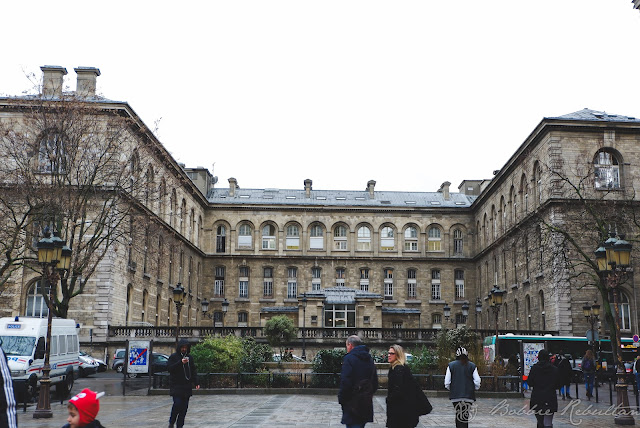 |
| View of Hotel Dieu Hospital from Rue de la Cite |
 |
| One of Paris' major railway stations: Gare du Nord |
 |
Sculptures on the main facade representing the European cities that this station serves. Unfortunately, I cannot
distinguish any of them on this picture. :( |
The day before we left Paris, we took a short walk at the Tuileries Garden (
Jardin des Tuileries). This large expanse of a garden must be a sight to behold during spring. But during our visit, the trees were bare and spiny against the blue sky. We sat down at the chairs lining the edge of the octagon pond and stared out across the park, allowing a few minutes to ourselves; to relax and wonder in disbelief at the past few days we were in Europe. I remember inhaling the crisp chilly air of winter in the city of love. The snow hasn't come down then, but the city lay ready and waiting.
|
|
The statue of the fame of the King at the gates of the Jardin des Tuileries
|
 |
| Tuileries Garden in winter |
Every now and then when I remember Paris, I think about how it contradicts itself--an inexhaustible amount of beauty in every nook and cranny, but also bruised, battered, and coping with its reputation. Monuments symbolizing the city's growth are found at every turn. And yet these same monuments, bear the symbol of the city's recovery at every struggle. Every now and then, I am hit with this longing to see this city again, to look at the details closer, to understand better. Our time here was short, and as fleeting as a kiss. We've barely scratched the surface of this city, and yet the richness I've unearthed feels sublime.
Au revoir, Paris!
 |
| July Column at Place de la Bastille commemorating the French Revolution |



























































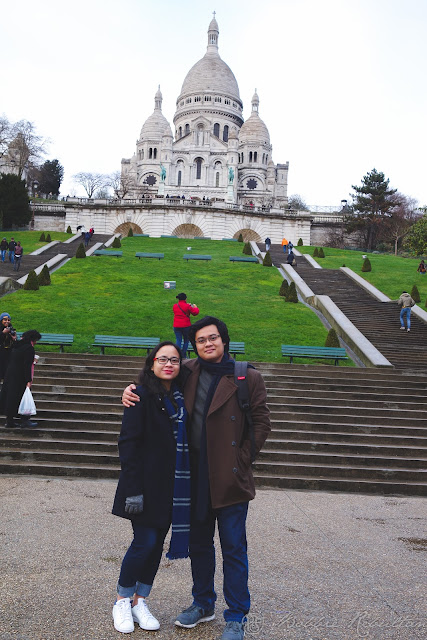
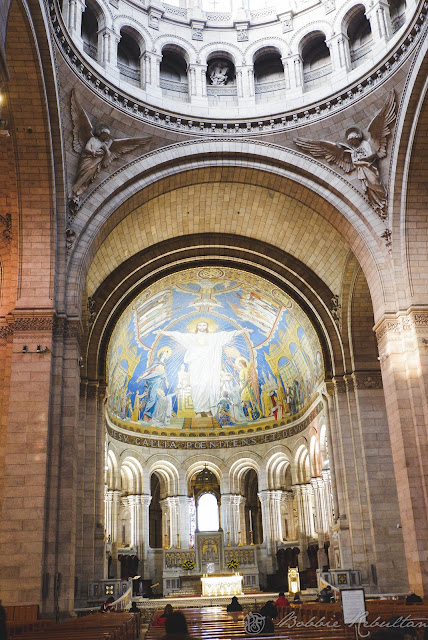
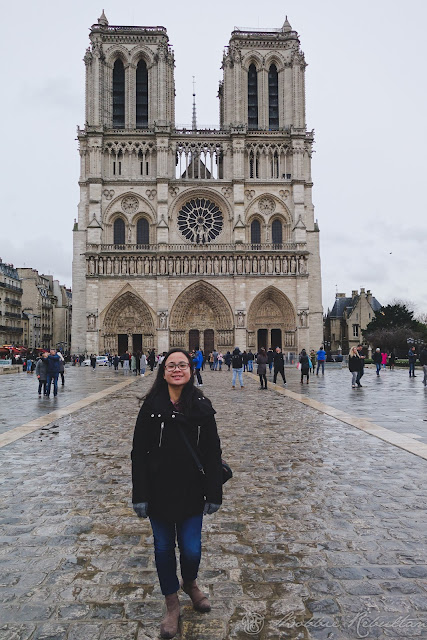








No comments:
Post a Comment